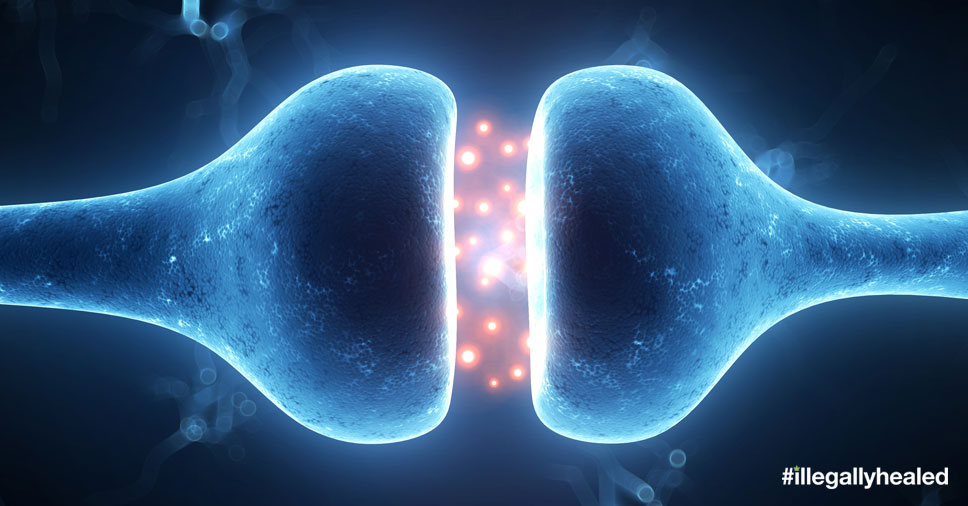For thousands of years, humans have known that consuming cannabis results in psychotropic experiences as well as a variety of medicinal benefits. Despite this long history, it was not until the early 1990s that we finally understood the biological mechanisms underlying the effects of cannabis.
“Cannabinoid receptors function as subtle sensing devices, tiny vibrating scanners perpetually primed to pick up biochemical cues that flow through fluids surrounding each cell.” -Martin Lee (O’Shaughnessy’s)
As with many other synthetic and plant-based compounds, activation of cellular receptors is largely responsible for the myriad of benefits associated with cannabis medicines.
Overview of CB1 and CB2 Receptors
All vertebrates have endocannabinoid systems (ECS.) Cannabinoid receptors are integral components of the ECS. They interact with endogenous cannabinoids like anandamide or 2-arachidonoyl glycerol (2-AG) to ultimately maintain homeostasis, or systemic balance.

Cannabinoid receptors
CB1 and CB2 receptors fall under the category of G protein-coupled receptors (GPCR). These receptors effectively propagate messages from outside the cell to inside the cell. When a ligand (binding compound) attaches to a GPCR, the structure of the receptor is altered. This causes the attached, or coupled, intracellular G protein to detach from the receptor and bind with other sites in the cell. This chain reaction initiates a cellular response, which is terminated when the G protein reattaches to the GPCR.
While CB1 and CB2 receptors are both GPCRs, they have different functions due to their physiological distributions and the types of G proteins they couple with. For example, CB1 receptors are located primarily in the brain, whereas CB2 receptors are primarily distributed across the immune system. However, there are many CB1 receptors in nonneuronal tissues like fat and liver cells, and CB2 receptors are found in several areas of the brain.
Functions of Cannabinoid Receptors
CB1 receptors were the first to be discovered, and are responsible for the “high” associated with tetrahydrocannabinol (THC). The density of CB1 receptors in brain areas associated with movement and anxiety partially explains the receptors’ ability to induce psychotropic effects. THC activates both CB1 and CB2 receptors, so it also alleviates pain and reduces inflammation.
The overall function of cannabinoid receptors is to maintain homeostasis, so all the effects are ultimately a balancing act. For example, activation of CB1 receptors can slow down the rate of neurotransmission, normalizing levels of neurotransmitters and correcting disruptions. When the immune system is overactive, activation of CB2 receptors can quell inflammation and prevent unnecessary tissue damage.
CB1 and CB2 receptors are just the beginning. Research indicates that there may be additional cannabinoid receptors, which for now are known as “orphan receptors” like GPR55 or GPR18. Both endocannabinoids and phytocannabinoids have been shown to interact with these orphan receptors, but more research is needed to fully elucidate their functions.
In this first in a five part series, Mary Lynn Mathre of Patients Out of Time expounds on the importance of education regarding our own endogenous Endocannabinoid System.
MEME: FACEBOOK / DPP of Utah

